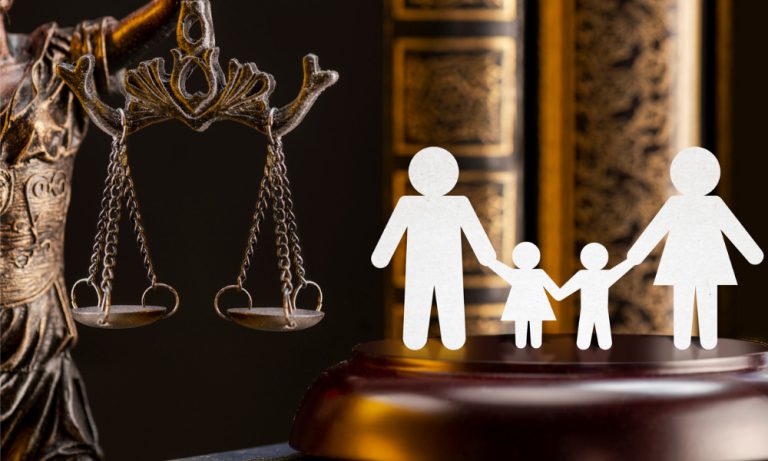
Adopting a child is a life-changing event that offers a rewarding opportunity to provide a stable and loving home for a child in need. However, the adoption process is complex and requires careful navigation of legal procedures to ensure everything is done lawfully and ethically. This article outlines the essential legal steps to take during the child adoption process, providing valuable insights into how prospective parents can successfully complete this journey.
Understanding the Adoption Process
What is Adoption?
Adoption is the legal process through which a child becomes the permanent and legal child of individuals who are not the child’s biological parents. Once the adoption is finalized, the adoptive parents assume all legal rights and responsibilities for the child, just as biological parents would.
Types of Adoption
There are several types of adoption, each with its own legal requirements. These include:
- Domestic Adoption: The adoption of a child within the same country.
- International Adoption: The adoption of a child from another country, which involves both the laws of the child’s country of origin and the adoptive parents’ country.
- Foster Care Adoption: The adoption of a child currently in the foster care system.
- Private Adoption: An adoption arranged directly between the birth parents and adoptive parents, often with the help of an attorney or agency.
Legal Steps in the Adoption Process
1. Research and Choose an Adoption Agency or Attorney

The first legal step in the adoption process is selecting an adoption agency or attorney. If you are opting for a domestic or international adoption through an agency, choose a licensed, reputable adoption agency that can guide you through the legal requirements. In cases of private adoption, an experienced adoption attorney is essential to handle the legal aspects of the process.
Make sure the agency or attorney you select has expertise in handling the specific type of adoption you are pursuing, as different processes require different legal documentation and procedures.
2. Complete a Home Study
A home study is a mandatory legal requirement for all adoptions. This process involves a thorough investigation of the prospective adoptive family’s background, living environment, and ability to care for a child. The home study typically includes:
- Background checks: Criminal background checks and child abuse clearances for all adults in the household.
- Home inspection: A visit by a social worker to ensure the home is a safe and stable environment for the child.
- Financial assessment: A review of the family’s financial stability to ensure they can provide for the child’s needs.
- Interviews: Personal interviews with family members to assess readiness for adoption.
The home study report is a critical document that the court will review before approving the adoption. It provides assurance that the prospective parents are qualified and prepared to adopt.
3. Filing the Petition for Adoption
Once the home study is complete and approved, the next legal step is filing an adoption petition with the court. This petition formalizes your intent to adopt and includes the following key components:
- Details about the adoptive parents: Information about their background, financial situation, and home study report.
- Details about the child: Information about the child being adopted, including birth information and parental rights status.
- Reason for adoption: A statement explaining why the adoption is in the best interest of the child.
The court will review this petition, along with the home study report, before proceeding to the next step in the adoption process.
4. Termination of Parental Rights
In order to legally adopt a child, the birth parents’ parental rights must be terminated. This can occur voluntarily or involuntarily, depending on the circumstances:
- Voluntary Termination: In cases of private or domestic adoption, the birth parents may voluntarily relinquish their parental rights by signing consent forms. This is typically done in front of a judge or an adoption attorney.
- Involuntary Termination: In cases of foster care adoption, the court may terminate parental rights due to neglect, abuse, or inability to care for the child. This process requires court intervention and may involve a trial.
Once parental rights are terminated, the child is legally free for adoption.
5. Adoption Hearing
The adoption hearing is the final legal step in the adoption process. During this hearing, the court reviews all relevant documents, including the home study report, adoption petition, and termination of parental rights. The adoptive parents and the child may be required to attend the hearing.
At the conclusion of the hearing, if the court is satisfied that all legal requirements have been met and the adoption is in the best interest of the child, the judge will issue an adoption decree. This legal document finalizes the adoption, granting the adoptive parents all legal rights and responsibilities for the child.
6. Finalizing the Adoption
Once the adoption decree is issued, the adoption is legally complete. The adoptive parents will receive a new birth certificate for the child, listing them as the child’s legal parents. The child’s legal name may also be changed at this time.
7. Post-Adoption Considerations
Some types of adoption, such as open adoptions, may require ongoing communication between the adoptive family and the birth parents. Additionally, adoptive families may need to comply with post-placement visits or reports as required by the adoption agency or the court, particularly in international adoptions.
Conclusion: Navigating the Legal Path to Adoption
The legal steps involved in child adoption are designed to ensure that the best interests of the child are protected throughout the process. By understanding the legal requirements and working with professionals like adoption agencies or attorneys, prospective parents can navigate the adoption process smoothly. Ensuring compliance with legal standards and completing each step with care can help families create lasting bonds and provide a secure, loving home for their new child.






